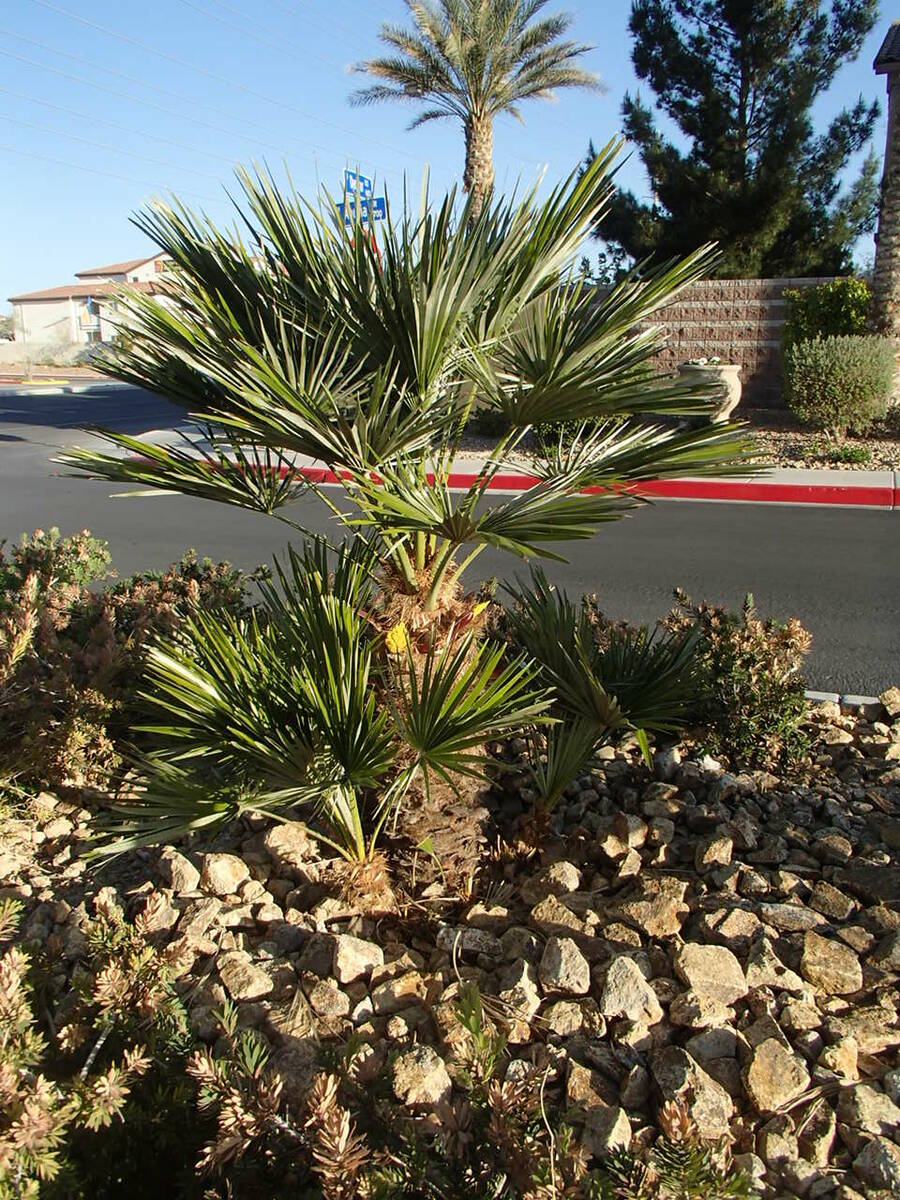Fertilize roses when growth starts, apply iron in spring
Q: When should I fertilize my roses? Is it OK to use fertilizer stakes? They are starting to bud now.
A: Fertilize them any time now. They are fertilized sometime toward the end of January when growth starts. You can use fertilizer stakes if you want. They are the “hamburger helper” of the fertilizer industry so are more expensive than a plain old fertilizer. Fertilizer stakes are marketed because they are convenient, less messy and you can buy what you need with no broken bags.
Don’t forget to apply iron along with this early spring application. You know my rant about iron: I like EDDHA chelated iron, but any chelated form of iron will usually work. Other types of chelated iron are less expensive to use, but they have a smaller number of soil types where they are effective.
Roses will need a second application of fertilizer just before it gets hot — about eight to 12 weeks later. Then apply a third application toward the end of September.
Avoid applications of fertilizer when it gets hot. If they flower during the winter, then a fourth application in about November is needed.
If they are in rock mulch, sprinkle some compost around them and wash it in the soil in late January or early February of each year. If the rock is smaller, you might need to rake it out of the way when the compost is applied. Then rake the rock back when you are finished. When using rock on the soil surface, some plants like roses need a boost of organics added to the soil once a year.
Roses require an application of fertilizer three or four times a year depending on your — and the roses — needs. Just avoid the hot months.
Compost applications are necessary only if roses are planted in rock mulch. Otherwise keep the woodchips rotting away and adding to the soil organic content and skip the compost application.
By the way, rose pruning should be finished by now.
Q: I have a 3-foot-tall transplanted saguaro that started leaning after a strong wind. How can I straighten it?
A: The biggest problem most homeowners have is putting saguaro on an automatic timer and then watering too often. If homeowners escape the “watering too often” problem, the next problem that pops up is watering a swath of soil not wide enough.
A fully established, 3-foot-tall saguaro will have roots 3 feet long or longer. In my opinion, water should be applied at least a 2-foot swath around this Sonoran desert plant.
The Mojave Desert doesn’t get as much rain as the Sonoran, and it hardly ever happens during the summer months when it is needed by plants. These roots grow shallow (to about 12 inches starting a foot from the trunk) to gather the infrequent rains that occur where they are native.
A small saguaro is a better choice than bigger a one. It roots faster and is easier to establish in the surrounding soil.
We had better luck with a smaller saguaro that was rescued from a highway constructed near Searchlight, many years ago. The smaller saguaro established easier, as would be expected. The penalty is that saguaros are slow to grow; from 6 to 12 inches a year at best.
Can you straighten a windblown saguaro? Maybe, if it’s done soon after it the wind pushed it into the soil and the soil is still wet. The roots are probably close to the plant.
If it were me, I would wet the soil around it and tug at it lightly and see if it moves. If not, then I would re-dig and replant it so that it is straight. Use a small amount of compost in the planting hole and dig it wide.
I think you have learned your lesson, but in the future, use a sprinkler on the end of a hose, and apply water 8 feet wide three or four times a year (once during the winter and three times when it is growing).
The secret is to water these plants infrequently, apply the water to a wide area and apply it slowly so that it gets at least 12 inches deep. Water it for one hour this way.
Q: I have a dwarf orange tree that is loaded this year, but the fruit is dry and the peel is thick. Any idea what might have caused this?
A: The thick peel could be either a nutrient (fertilizer) issue or watering frequency problem or both. Soils in subdivisions are either dug and hauled from somewhere, crushed from native rock or a combination. It is very possibly a nutrient problem.
Fruit dryness is probably because it was harvested late. I assume it’s a navel of some type. Do not harvest most oranges as late as a Meyer lemon.
Harvesting of most oranges is from October through December (except Valencia types) depending on the variety. January is late for most oranges. You did not tell me the variety.
Granular fertilizers made for citrus are available and should be used when in doubt. Use that fertilizer combined with compost or woodchips. Follow the rate of application on the bag of fertilizer. If woodchips are used, then cover the soil with 2 to 3 inches.
When adding water, avoid daily watering. Instead, water these plants 18 to 24 inches deep and apply this water beneath the canopy of the tree. Cover this soil with 2 inches of woodchips.
Make the tree use the water from deep in the soil before watering again. In the summer, the soil surface should look dry at least a day before watering again.
Roots of trees are lazy. They use water easiest to “take up” first. This means shallow, newly applied water is first taken up by the plant and then the roots focus on water from deeper roots as the soil at the top begins to dry.
Remember, the roots of these trees are 18 to 24 inches deep. A soil moisture meter should register “5” (midway) at a 6-inch depth before watering again.
Q: We want to add a palm to our backyard next to the pool in Pahrump. The many types confuse us. We can get temps in the winter of 30 degrees or lower, and in the summer 115. If there’s not a palm that would survive in these temps, what other type of tree to shade the portion of the pool do you suggest?
A: Selections of palms can be confusing. Many people don’t like palms near pools because of the cleaning involved, their height and their high-water use compared to desert plants.
Palms are considered messy plants primarily because of their spring cleanup. Many palms, like the Mexican and California fan palms, get very tall and require regular pruning every couple of years. Because of their height, I would not consider Mexican and California fan palms for home landscapes.
Palms like the Mediterranean fan palm, although it doesn’t get tall (about 25 feet), require once-a-year removal of suckers from its base to form a single or multiple trunk plant. Otherwise, the Mediterranean fan palm forms a very wide bush that is 25 feet tall and 25 feet wide. An alternative to the Mediterranean fan palm is the windmill palm, but it doesn’t handle the heat of the summer as well and grows slowly to about 20 feet.
If you want shade in that spot, consider a creative way to put something that needs no water such as a shade structure. If you want to put plants around it, then use a climbing vine such as cat’s claw, bougainvillea (cut it to the ground when it freezes and it will grow back), crossvine and others to decorate the structure and lower overall water use.
If I were dead set on using a palm and watering it, then probably Mediterranean fan palm, together with annual sucker removal, would be my choice. Mediterranean fan palms can handle the desert heat better than windmill palm, it’s easier to find and doesn’t get as tall as Mexican and California fan palms. Its negatives are its water use and annual maintenance.
Bob Morris is a horticulture expert and professor emeritus of the University of Nevada, Las Vegas. Visit his blog at xtremehorticulture.blogspot.com. Send questions to Extremehort@aol.com.























